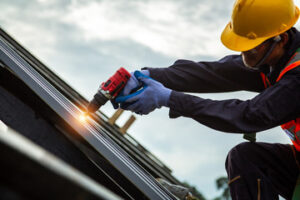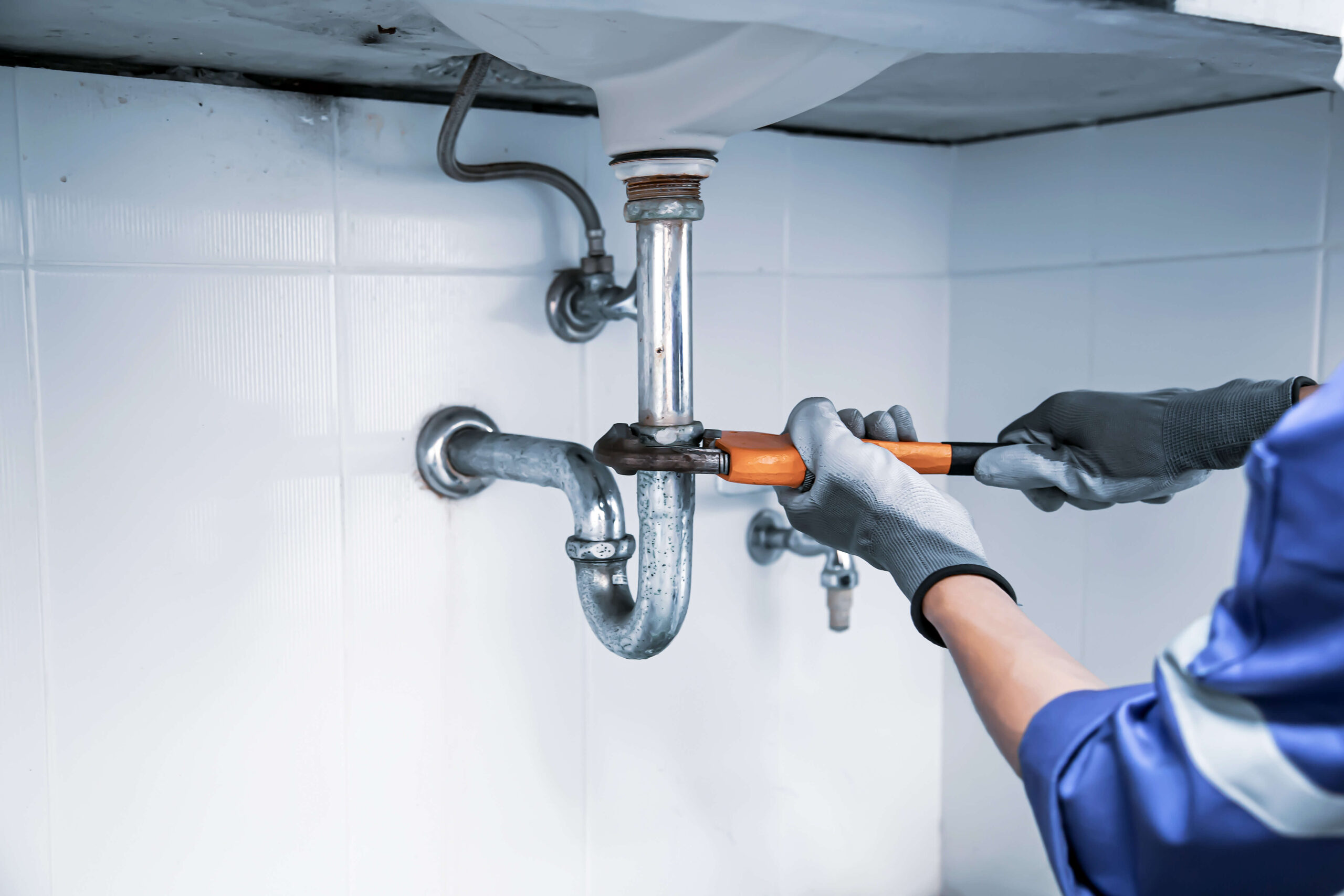A well-installed roof shields your home from rain, snow and other weather elements. It also promotes energy efficiency and regulates indoor temperatures, reducing the need for excessive heating or cooling.

Before a roofing project begins, ask the contractors to move any expensive wall decorations like mirrors and framed photos to protect them from falling materials. Fasten a tool belt around your waist and secure children and pets in another room to prevent them from getting injured by flying debris. Visit Website for more information.
A roof replacement requires the right materials for a job well done. A good roofing contractor will know all the essential tools and materials needed to complete a quality project, from start to finish. Some of the more essential items include tarps to collect shingle debris, a chalk line and a nail gun with staples. A circular saw is also helpful to cut additional vent holes or to make adjustments in the roof sheathing.
An important consideration during the roof installation process is to choose a roofing material that will create an energy-efficient home. Old or damaged roofs leak air and force heating and cooling systems to work overtime, leading to high energy costs for homeowners. Newer roofing materials and techniques, like reflective coatings and insulation layers, help minimize energy loss and keep indoor temperatures comfortable.
The wood foundation layer for a roof, called sheathing, is an essential component of the entire roofing system. Roof sheathing is typically made from plywood or OSB, and it provides a strong base for the shingles and other roof coverings. If the sheathing is not in good condition, it needs to be replaced before beginning the actual roof installation.
A metal roof adds durability and beauty to a home, and is an ideal choice for regions with heavy snowfall. However, it is not as cost-effective as a shingle roof in most cases. If you are interested in a metal roof, consult your roofing contractor about the pros and cons of this option.
Roofing materials such as slate are attractive and durable, but they require expert installation and are difficult to repair. Composition slate is an alternative that looks and functions like true slate, but it is less expensive and lighter to install.
A mineral-surfaced leak barrier is vital to protect vulnerable areas of the roof, including the eaves and valleys. This roofing product, such as GAF WeatherWatch (r) mineral-surfaced leak barrier, prevents water from seeping into the sheathing, reducing the risk of damage and leaks caused by melting ice dams and wind-driven rain. A drip edge flashing is a piece of non-corrosive metal that goes under the underlayment along the eaves. It helps to prevent water from leaking into the rafters or trusses of the roof, and it protects the underlayment from moisture damage as well.
Ventilation
All roofs must be adequately ventilated to avoid problems such as heat buildup in the summer and moisture buildup in the winter. Ventilation also helps protect a home’s insulation and structural integrity.
Whether your roof is flat or sloped, there are a variety of ventilation options that can be used to keep it in good condition. One common solution is to use soffit vents, which are installed into the space under the eaves of the roof. These vents are recognizable by their narrow slit openings that allow air to flow in and out. There are several different soffit venting options available, but it’s important to choose a model that is designed for your climate.
Another option is to install a ridge vent, which runs along the peak of the roof. The ridge vent allows hot air to escape as it rises, which can help reduce the temperature inside the attic. A ridge vent can be installed in place of soffit vents or as an addition to them, depending on your preference.
To install a ridge vent, the roofer will first, from the attic, use nails to mark preferred spots for the vent (he may even drive the nail through a shingle that’s easy to see) between two rafters. He will then cut away shingles and underlayment, and use a saber saw to create a guide hole the size of the diameter of the vent. The roofer will then slip the flange of the vent under shingles and into the hole, which he’ll seal by driving roofing nails through it (following manufacturer instructions).
Ventilation requirements for your flat or pitched roof depend on the building code in your area and the climate you live in. However, you can quickly calculate the minimum NFA required for your roof using a ventilation calculator available online or from many roofing manufacturers. It’s a great idea to consult the calculators before starting your project so that you have the most accurate information about the ventilation requirements for your roof. Then you’ll be ready to plan your soffit vents and exhaust vents in accordance with the guidelines set forth by your local roofer.
Insulation
Insulation is a material that prevents heat and sound from transmitting between areas of a building. Its basic function is to reduce the transfer of heat from the warm inside a building to the cooler outside air, but it also helps minimize energy costs by limiting the amount of heat that must be paid for. Insulation comes in a variety of forms, from fiberglass blankets to spray foam, and each has its own advantages depending on what type of building it will be used for.
In addition to its thermal properties, insulation can also be used for acoustic purposes. It works by trapping pockets of still air, which creates a barrier that significantly reduces the transmission of sound. This type of insulation can be installed in a variety of ways, including in walls and in the ceilings and floors of buildings.
Some states have energy conservation codes that require a specific level of insulation in all structures. Connecticut, for example, adheres to the International Code Council’s energy efficiency standards. These codes are designed to ensure that new buildings have the appropriate levels of thermal and acoustic insulation, which will help to maximize the energy efficiency of the structure and save the owner money on heating and cooling costs.
Most states have their own set of rules for the minimum insulation required in structures, but they usually base their requirements on the International Code Council’s energy efficiency standards. Some states may also make their own changes to these standards in order to address particular climate issues or to ensure the safety of residents.
There are several types of insulation available to home and business owners, and the roof installation process can vary based on what kind of materials are used. Some types of insulation are blown into place, while others are rolled out in sheets or sprayed on to create a layer of protection that protects the sheathing.
A roofing professional will typically inspect the sheathing of a roof before beginning work on the new shingles. If it is found to be rotting or damaged in any way, the sheathing will be replaced before the roof is finished. The flashing around any vents, chimneys or valleys will be inspected to ensure that they are secure. If the flashing is leaking or in need of replacement, high-quality aluminum or galvanized steel flashing will be added to the joints of the roof to help keep water out.
Safety
A well-installed roof provides a number of benefits for homeowners. It protects the home from weather elements, reducing energy bills and improving indoor comfort. A roof can also add curb appeal and value to the property. In addition, a properly installed roof can help protect the structural integrity of the building.
The roof installation process must follow strict safety protocols. This ensures the safety of workers, as well as the integrity of the newly-installed roofing materials. It’s important to choose a local roofing company that prioritizes safety and adheres to industry-leading standards.
Fall Hazards
Workers on the roof are at serious risk for falls, so it’s crucial that all workers have access to proper fall protection equipment during the project. This includes personal fall arrest systems (PFAS) and guardrails. It’s also necessary to set up scaffolding that’s designed, erected, and assembled by qualified personnel in accordance with OSHA standards and manufacturer guidelines. Scaffolding should be secured to prevent it from tipping or collapsing, and tripping hazards must be removed.
During the roof installation process, workers should always wear hard hats and use non-conductive ladders and equipment to avoid electrical hazards. They should also look for and identify any power lines overhead before handling a ladder, and make sure to keep a safe distance from them. Additionally, if roofing work is being performed in damp or windy weather, it’s best to delay the project until conditions improve.
Skylights and openings on the roof are a common hazard for falling, so it’s important that contractors install covers or PFAS around them to prevent injuries. Additionally, contractors should have a plan for working around a chimney and other structures on the roof.
Fire is another potential hazard during roofing projects, so companies should follow strict fire safety protocols when using torch-down applications or hot tar. This includes keeping fire extinguishers readily accessible and ensuring that all workers are trained in fire safety. Additionally, the work area should be kept clean and free of any flammable materials or objects.

